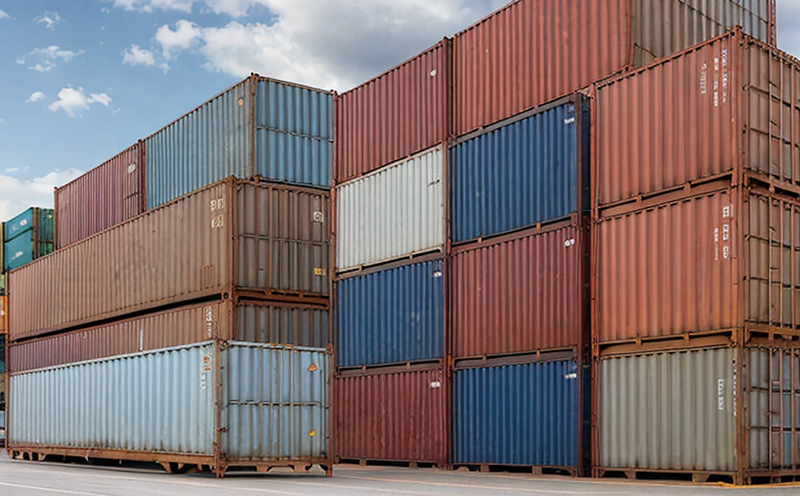EN 14682 Safety of Children’s Clothing Compliance Testing for Trade
The EN 14682 standard is a crucial regulation for ensuring that children's clothing sold in the European Union meets stringent safety requirements. This service involves comprehensive testing to verify compliance with this standard, which aims to protect young consumers from potential hazards such as sharp edges, small parts, and chemicals that could cause injury or harm.
Our laboratory specializes in providing EN 14682 compliance testing services for trade facilitation purposes, ensuring that products meet the strict criteria set by European Union regulations. This includes testing various components of children's clothing such as fabrics, trimmings, zippers, and buttons to ensure they are safe for use.
The testing process involves multiple stages to cover all aspects of safety. First, we conduct a detailed inspection of the product to identify any potential hazards that could be present in the design or materials used. This is followed by mechanical tests to assess the durability and stability of components like zippers and buttons under realistic use conditions.
Chemical analysis is another critical component of our testing process, aimed at detecting harmful substances such as heavy metals, formaldehyde, and other toxic chemicals that may be present in the fabric or accessories. Additionally, we perform flammability tests to ensure that clothing items meet the required safety levels when exposed to fire.
Our team of experts uses state-of-the-art equipment and follows internationally recognized standards throughout the testing process. This ensures accuracy and reliability of results, giving our clients peace of mind regarding their product's compliance status.
In summary, our EN 14682 safety of children’s clothing compliance testing service provides a comprehensive approach to ensuring that products meet all necessary requirements for safe trade within the EU market. By leveraging our expertise and advanced facilities, we offer accurate, reliable, and timely results which are essential for maintaining high standards in international commerce.
Our services cater specifically to quality managers, compliance officers, R&D engineers, and procurement teams working across different sectors including fashion, textiles, and manufacturing industries. We understand the importance of meeting regulatory requirements while balancing commercial interests, making us a trusted partner for businesses operating within the EU.
Applied Standards
| Standard Number | Description |
|---|---|
| EN 14682:2019 | European standard for the safety of children’s outerwear and undergarments. |
| ISO 13995-1:2017 | International standard for flammability testing of textiles. |
| Test Procedure | Description |
|---|---|
| Physical Testing | Involves checking the physical properties and dimensions of components like zippers, buttons, and trims. |
| Chemical Analysis | Conducts quantitative analysis for hazardous substances in fabrics and accessories. |
Quality and Reliability Assurance
- ISO 9001:2015 certified quality management system ensuring consistent high standards.
- Regular calibration of testing equipment to maintain accuracy and precision.
- Comprehensive training programs for staff to stay updated on latest methodologies and technologies.
- Detailed documentation and record keeping throughout the entire testing process.
- Independent third-party audits conducted annually to validate compliance with international standards.
Environmental and Sustainability Contributions
In our commitment to sustainability, we have implemented several initiatives aimed at minimizing environmental impact while maintaining product safety. Our laboratories are equipped with state-of-the-art recycling facilities that allow us to handle waste products efficiently without compromising on quality.
- Eco-friendly packaging materials used for shipping samples between locations.
- Energy-efficient lighting and ventilation systems installed in all our premises.
We believe that sustainable practices should not come at the expense of safety. Therefore, we continue to explore innovative ways to integrate green technologies into our operations without sacrificing performance or accuracy.





